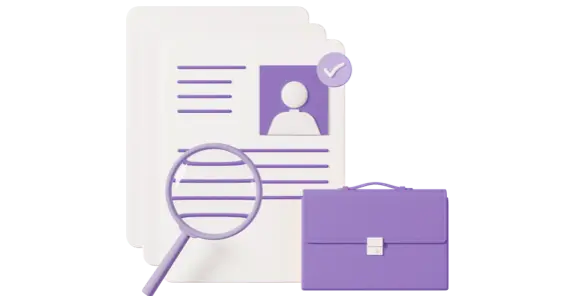Teacher - Secondary school - Design and technology
Encourage, motivate and inspire young people to design and make objects that have a practical use, using a variety of techniques.

About the job
Salary
Source: National Careers Service
Weekly
£577
Entry level
£904
Experienced
Monthly
£2,500
Entry level
£3,917
Experienced
Yearly
£30,000
Entry level
£47,000
Experienced
29,300
people are currently employed
High growth
300 more jobs in 5 years
These figures refer to this job and similar ones with comparable skills and qualifications. They only apply to Scotland. Source: Oxford Economics
What it's like
As a design and technology teacher, you’d encourage, motivate and inspire your students to design and make objects that have a practical use, using a variety of techniques. Design and technology is a broad subject covering topics such as craft skills, use of tools, graphic communication, computer-aided design and mechanical systems.
You’d work to guidelines set up by the Curriculum for Excellence and prepare pupils, aged 11 to 18, for national exams.
Your tasks might include:
preparing teaching materials and lessons
teaching students to work with computers, wood and metal work tools and machines
assessing students’ progress and marking their work
setting and marking homework
managing classroom behaviour
discussing students' progress with parents and carers
organising study trips, social activities and sports events
Sometimes you will need to deal with challenging behaviour. It may be difficult to get some teenagers to study so you’d need to be imaginative and enthusiastic to keep them interested.
As well as teaching, you’d also attend meetings and regular in-service training courses as part of your professional development. You’d work closely with colleagues to plan the school’s timetables, and work with other professionals, such as education psychologists and social workers.

Hours

Environment

Travel
Explore more information about this job
Here are some useful links to learn more about this career:
Like the sound of this career?
Browse courses in Scotland related to 'Teacher - Secondary school - Design and technology'
Select qualification level(s)
Other careers that you might like
Teacher - Secondary School - Physical Education Teacher - Secondary School Teacher - Secondary School - Gaelic Teacher - Secondary school - Computing Teacher - Secondary School - English Teacher - Secondary School - Biology Teacher - Secondary School - Geography Teacher - Secondary School - History Teacher - Secondary School - Religious Education Teacher - Secondary School - Home Economics Teacher - Secondary School - Art and Design Teacher - Secondary School - Mathematics Teacher - Secondary School - Chemistry Teacher - Secondary School - Physics Teacher - Secondary School - Business Studies Teacher - Secondary School - Music Teacher - Secondary School - Modern Studies Teacher - Secondary School - Modern Languages Teacher - Secondary School - Drama
Related industries
Many jobs can be done in lots of different industries. We've highlighted the ones we think are most important for this job.
Top skills
Skills are things you're good at. Whether you know what yours are or not, everyone has them!
It's useful to learn which ones are important in a job so you know the areas you need to brush up on. It can also help you work out if you're suited to a career.
Here are some of the skills you'll need to do this job:
- mentoring
- ethical
- time management
- developing a plan
- social conscience
- written communication
- working with technology
- verbal communication
- mediating

Your skills are important
Our unique skillsets are what make us stand out from the crowd. Learn about each skill in depth and discover what employers look for in your applications and interviews.
Getting in
Explore the sections shown for more information about getting into this career.
You might have qualifications which are not shown here but will allow you access to a course. You can compare your qualifications by looking at their SCQF Level. For more information about this, check out the SCQF website.
Always contact the college, university or training provider to check exactly what you'll need.
Colleges and universities will list subjects you'll need for entry to a course. Some useful subjects include:
Design and Manufacture
Design and Technology
English
Mathematics
Physics
Applications of Mathematics
Entry requirements for courses can change. Always contact the college, university or training provider to check exactly what you’ll need.
There are 3 routes into teaching design and technology.
You can study a 4 year degree that combines education with technology (such as BTechEd Technological Education, which includes a teaching qualification - University of Glasgow) or take a one-year PGDE course following an undergraduate degree in an engineering or technological subject. You could also apply to an Honour's degree (SCQF level 9/10) in Education and Curricular Studies with Teaching Qualification at Strathclyde University. This is a 2 year course for which you would need a relevant HND. You would be able to go into a one-year work placement after graduation.
Whichever route you take, you must study at least 2 of these subjects to be able to apply for jobs as a design and technology teacher:
Mechanical, Electrical or Electronic Engineering
Mechatronics, Architecture, Building Services or Construction Technology
Graphic Design, Computer Aided Design, Computer Aided Design Manufacture, Industrial Design or Product Design
any subject area relevant to the design and technology curriculum in Scottish schools
Experience that demonstrates your ability to work with young people would also be desirable.
While not all employers list specific qualification requirements they do ask for relevant experience, usually work based, that demonstrates a range of transferable skills. You should also be able to demonstrate that you have practical craft skills.
You'll need to be a member of the Protecting Vulnerable Groups Scheme.
Explore over 22,000 courses in Scotland
Find the perfect course to boost your career.
